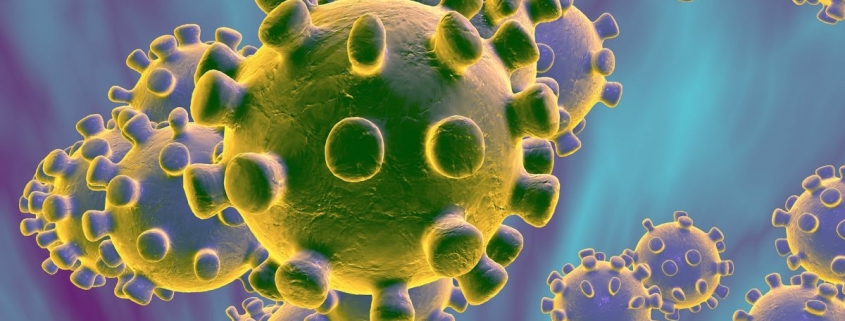Coronavirus: The Truth
Coronavirus is the name given to the family of viruses that causes illness in humans and animals. They can cause the common cold or more severe diseases such as severe acute respiratory syndrome (SARS) and the Middle East respiratory syndrome (MERS).
Coronaviruses originally only transmitted between animals and humans. Such as SARS which was transmitted from civet cats to humans
The coronavirus that’s currently making people sick is coronavirus disease COVID-19. It is a new strain which hasn’t been identified in humans before. Not much is known about it. However human to human transmission has been confirmed.
Where did the virus originate?
Chinese health authorities are yet to determine where the virus came from. However they say it most likely came from a seafood market in Wihan where wildlife has been traded illegally.
While on February 7th researchers have suggested that the virus could’ve spread via illegally trafficked infected t. Pangolins are prized in Asia for food and medicine. However, Scientists have pointed to either bats or snakes as the source.
What are the symptoms
The signs of infection are respiratory symptoms fever, cough, shortness of breath and breathing difficulties. In more severe cases, infection can cause pneumonia, severe acute respiratory syndrome, kidney failure and even death.
While most common symptoms of Coronavirus are fever, tiredness, and dry cough. Others may experience aches and pains, nasal congestion, runny nose, sore throat or diarrhea. These symptoms however are usually mild and begin gradually.
Furthermore some people may be infected and not even know it as some don’t develop any symptoms and don’t feel unwell.
About 80% of people infected will recover from COVOD-19 without needing special treatment. 1 out of 19 will become seriously ill and have trouble breathing.
Older people, especially those with underlying medical problems such as high blood pressure, heart problems or diabetes, are more likely to develop serious illness.
People with fever, cough and difficulty breathing should seek medical attention.
How does COVID-19 spread?
The disease is spread from person to person via small droplets from the nose or mouth when an infected person coughs or exhales. Droplets will then land on objects and surfaces around the infected person. Others will then touch surfaces or objects and then touch their eyes nose or mouth. Which will then lead to infection. You may also become infected if you breathe in droplets from an infected person. It is advisable to stand more than 1 meter (3ft) away from a person who is sick.
Is COVID-19 the same as SARS?
SARS and COVID-19 are related genetically but are different. SARS is more deadly and less infectious than COVID-19. There has been no outbreaks of SARS anywhere in the world since 2003.
What is being done to stop it from spreading?
Scientists are racing to develop a vaccine, but warned that it won’t be available until 2021.
Chinese officials have sealed off Wuhan and placed restrictions on travel to and from several cities, affecting 60M people.
Many airlines have cancelled flights to china and some countries have banned Chinese citizens from entering their territories.
Italy has its own red zones and have sealed off small towns in northern Italy.
Is this a global emergency?
Yes. The WHO have declared it a global health emergency as of Jan 30th. The decision was made to declare it one was after the confirmation of the first cases of human to human transmission outside of China.
This alert is to call other countries around the world to co-ordinate a response to Coronavirus under the guidance of the United Nations health agency.
Since the declaration was formalised there’s been 5 global health emergencies since 2005: swine flu in 2009, polio in 2014, Ebola in 2014, Zika in 2016 and Ebola again in 2019.
What’s the risk for people like me?
Those more likely to die if infected are: the elderly, the unwell and, maybe, men.
After an analysis of more than 44,000 cases in China the death rate for the very elderly to the middle aged was 10x!
The death rate was the lowest for the under 30’s with 8 deaths in the 4,500 cases.
While, the death rate for those with an underlying health condition such as diabetes, high blood pressure, heart or breathing problems was 5 times more common.
It’s also slightly higher for men than women.
While some analysis has been made all of the factors interact with each other and there isn’t a complete picture of the risk for every type of person in every location.
What’s the risk for people where I live?
The risks for the elderly in China will be very different to the risks for the elderly in Europe or China. Your prognosis also depends on the treatment you get. It also depends on what type of treatment is available at the stage of the epidemic you get infected.
If the epidemic gets worse, healthcare systems could get swamped making it harder for you to get treatment.
Current estimates of the incubation period range from 1 to 14 days.
Incubation period: the amount of time between infection and the onset of symptoms.
However, most people who are infected will show symptoms within 5 to 6 days.
Where have cases been reported?
Most cases (More than 95%) are in China, the most of which are in the Hubei province.
Deaths have also been confirmed in: Hong Kong, the Philippines, Japan, France, Taiwan, South Korea, Italy and Iran.
Infections have now been confirmed in every continent except Antarctica; many countries in the Asia-Pacific region as well as in Europe, North & South America, the Middle East and Africa, Australia.
Majority of infections outside of China are the result of those who have travelled to China. Instances of human-to-human transmission have been recorded in several countries
How likely am I to catch COVID-19?
It all depends on where you live and where you’ve travelled recently.
The risk of infection is higher in areas where a number people have been diagnosed with COVID-19.
For people outside of China, the risk of getting infected with Coronavirus is currently low. However it is best practice to be aware of the situation and preparedness in your area.
Sources
World Health Organization 1 / 2 / 3 / 4
Listen to the guys chatting about this by clicking here!
Keep up to date with everything How To Kill An Hour by signing up to our newsletter by clicking here!
Let us know what you think of the show by clicking here!
Click here to subscribe to our YouTube Channel to see more amazing ways to kill time!
Follow us on Twitch by clicking here!









